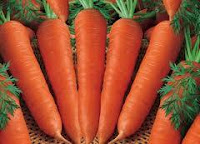

Merenunglah sejenak terhadap apa yang telah anda lakukan sampai saat ini, karena dengan itu anda akan semakin bijak dalam menjalani kehidupan.




Pertanian dan budidaya benih adalah sinonim dalam hal bahwa siklus produksi tanaman dimulai dengan benih yang tidak habis. Benih dianggap sebagai unsure inti dari semua sistem pertanian. Kualitas dan karakteristik benih sangat menentukan produktifitas, keberlanjutan dan keberhasilan dari suatu sistem pertanian.
Dengan penemuan yang dilakukan dalam penelitian dan pengembangan, ilmu – dikemudikan oleh beragam motif, telah menentang prose salami dari perkembangan benih dan penggunaannya oleh petani. Terobosan teknologi telah dilakukan dalam metode perkembangbiakan benih secara alami. Teknologi yang tela dikembangkan, tidaklah alami. Penelitian teknologi yang disponsori oleh korporasi – oleh institusi penelitian tanaman resmi dan perusahaan benih, menghasilkan benih-benih yang tidak memperbaiki perkembangan danri perspektif dari sistem pertanian dan keuntungan menyeluruh dari petani. Singkatnya, teknologi produksi benih telah dibuat rancu pada sektor pertanian.
Rekayasa Genetik, mengacu kepada teknologi yang secara buatan memindahkan gen-gen dari satu organisme kepada yang lain, biasanya dari satu spesies ke spesies lain, untuk menghasilkan organisme baru atau sama sekali baru (novel). Teknik ini meliputi manipulasi yang sangat canggih dari materi genetik dan kimia penting secara biologi lainnya, yang merubah DNA dari mahluk hidup. Tanaman transgenik adalah tanaman yang telah direkayasa secara genetik agar mempunyai sifat dari organisme yang bukan kerabat. Beberapa “temuan” bioteknologi yang sedang berjalan atau telah ada, dan mempunyai dampak pada keamanan pangan dan control benih adalah sebagai berikut :
Ini adalah tanaman padi yang telah dirubah dengan gen yang dapat bertahan terhadap keracunan herbisida. Perkembangan padi transgenik yang dihasilkan akan tidak terpengaruh oleh formulasi herbisida tertentu dari perusahaan pestisida tertentu yang mengembangkan benih transgenik ini.
Bt atau Bacillus thuringiensis adalah mikroba tanah yang mengandung racun pembunuh serangga. Bila disuntikkan ke dalam tanaman padi, gennya akan memberikan tanaman padi perlindungan terhadap hama serangga. Bila penggerek batang misalnya, memakan Bt, racunnya dapat menghancurkan dinding usus serangga, sehingga menyebabkan kematian. Bt adalah insektisida mikrobia :
Hibrida turunan pertama (F1) dari benih padi dihasilkan dari 2 induk murni padi (purebred rice lines). Dalam produksi tanaman normal, petani mengambil benih dari panen dan bila digunakan kembali, ini akan memberikan tampilan yang sama dengan benih asalnya. Dengan menggunakan benih hibrida, sifat tampilan dari benih yang ditanam ulang akan sangat buruk dibandingkan dengan tanaman pertama (seperti, hasil rendah, lebih rentan terhadap hama, bentuknya campuran).
Juga disebut sebagai teknologi “Terminator”, prosedur rekayasa genetik ini membuat tanaman menghasilkan benih yang steril (mandul). Dengan demikian petani tidak dapat menyimpan benih untuk ditanam pada musim berikutnya, tetapi dipaksa harus membeli benih dari perusahaan benih. Perbedaan utama dengan benih hibrida adalah bila benihnya disimpan dan dimaksudkan untuk penanaman berikutnya akan sama sekali tidak berkecambah.